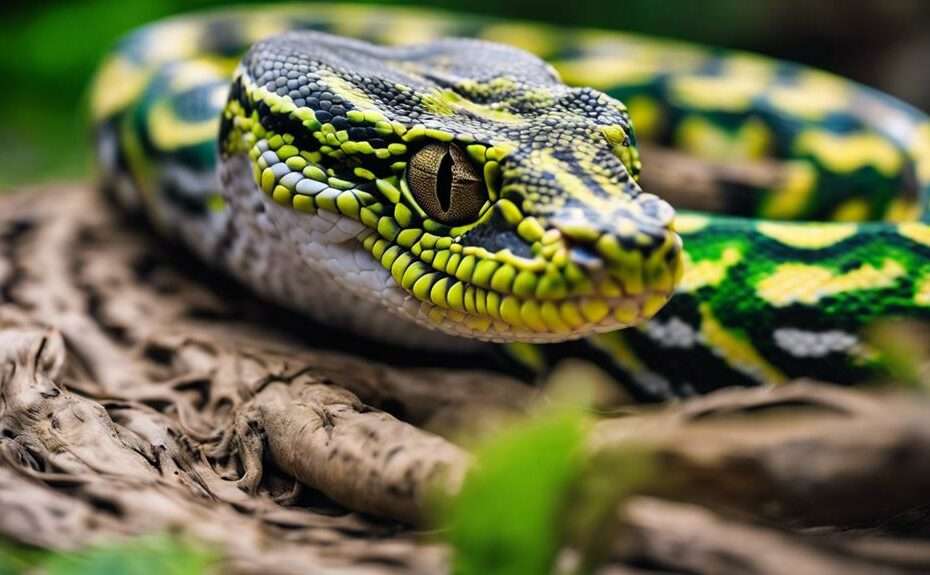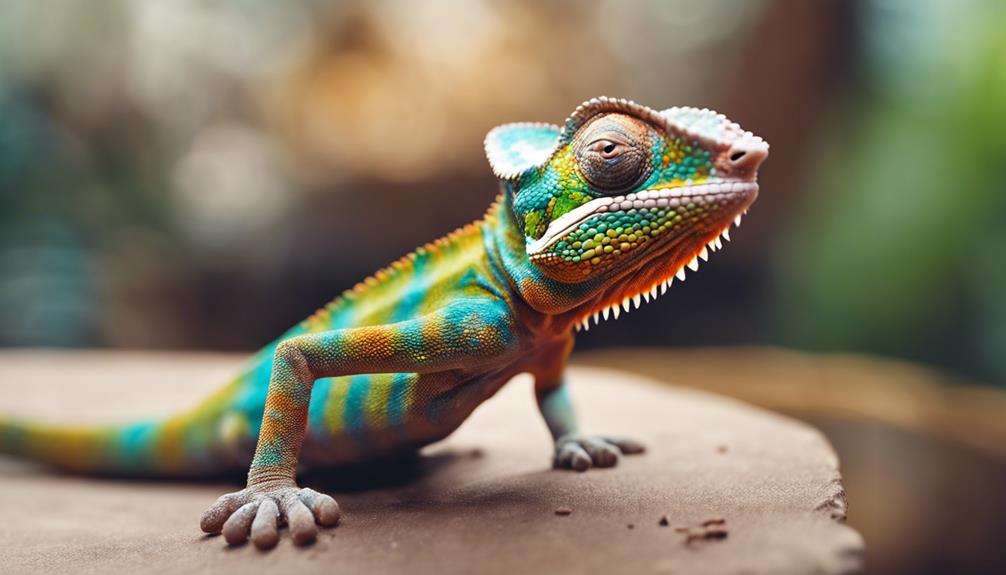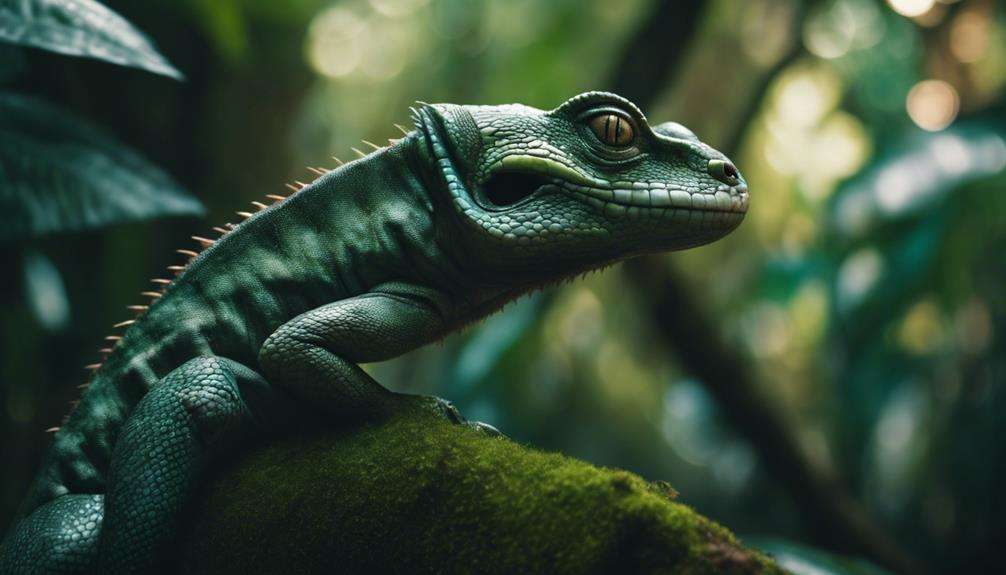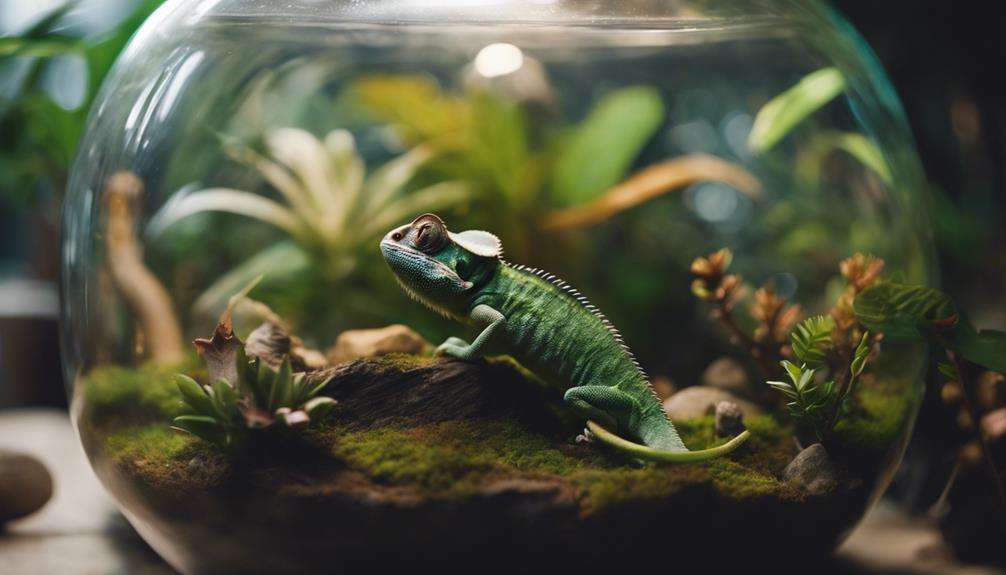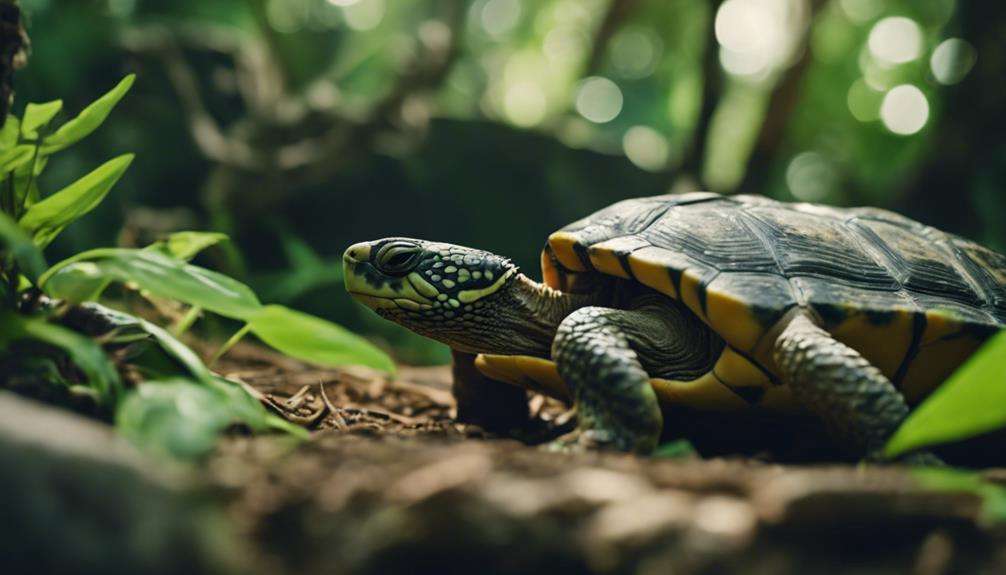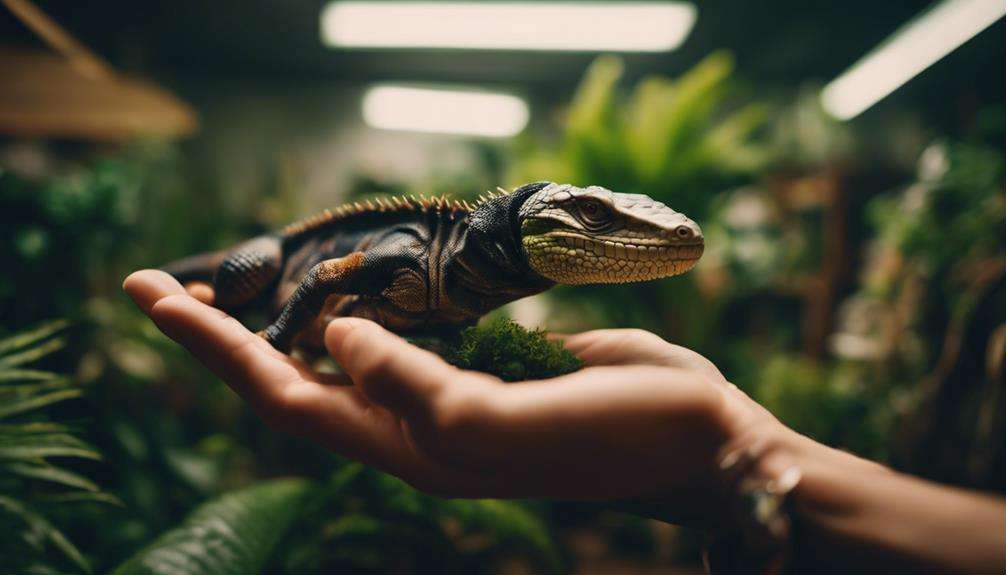If you've ever marveled at the intricate patterns of a Blue Malayan Coral Snake, you might be curious about other reptiles that boast equally stunning designs. These creatures not only captivate with their striking appearances but also offer insights into the wonders of nature's artistry.
From the vibrant hues of the Eastern Coral Snake to the mesmerizing scales of the Boelens Python, the world of reptiles is a canvas of mesmerizing patterns waiting to be explored.
Key Takeaways
- Blue Malayan Coral Snake, Green Tree Python, Eastern Coral Snake, and Bush Viper exhibit striking patterns for warning, camouflage, and allure.
- Unique features like keeled scales, ring-like patterns, and genetic mutations contribute to the captivating appearances of these reptiles.
- Conservation efforts focus on habitat restoration, captive breeding, and genetic diversity to protect these visually stunning reptiles.
- Geographic distribution spans regions like Southeastern United States, Western Australia, New Guinea, and tropical Sub-Saharan Africa for these patterned reptiles.
Blue Malayan Coral Snake
Blue Malayan Coral Snakes showcase a mesmerizing coloration that blends black and iridescent electric blue scales with a vivid orange head, belly, and tail. These beautiful animals are part of the Coral Snakes family and are renowned for their striking Color and Pattern. The vibrant hues of blue, black, and orange create a visually captivating appearance that distinguishes them from other snake species. This unique color combination serves as a warning to potential predators of their venomous nature.
The distinct color and pattern of Blue Malayan Coral Snakes play a crucial role in their survival in the wild. The bright orange colors on their head, belly, and tail act as a warning signal to deter predators from attacking. These snakes possess long venom glands containing cardiotoxin, making their bite highly venomous, despite causing minimal human deaths. The fusion of striking colors and potent venom makes Blue Malayan Coral Snakes fascinating and formidable creatures in their natural habitat.
Green Tree Python
Originating from New Guinea and Australia, the Green Tree Python showcases a mesmerizing color palette that evolves from red, blue, or yellow scales at birth to vibrant green hues as they mature. This python species, scientifically known as Morelia viridis, is revered for its stunning and vibrant coloration. Each Green Tree Python boasts a unique pattern, making them visually striking and individualistic. Their beautiful overlapping scales and striking color combinations set them apart in the reptile world.
Popular among reptile enthusiasts, these pythons exhibit a vivid green coloration that helps them blend seamlessly into their forested habitats. The transition from the initial bright colors of their youth to the lush green of adulthood is a remarkable transformation. Green Tree Pythons aren't only captivating due to their coloration but also due to their docile nature, making them a sought-after species for reptile keepers looking to add a visually stunning and relatively manageable snake to their collection.
Eastern Coral Snake
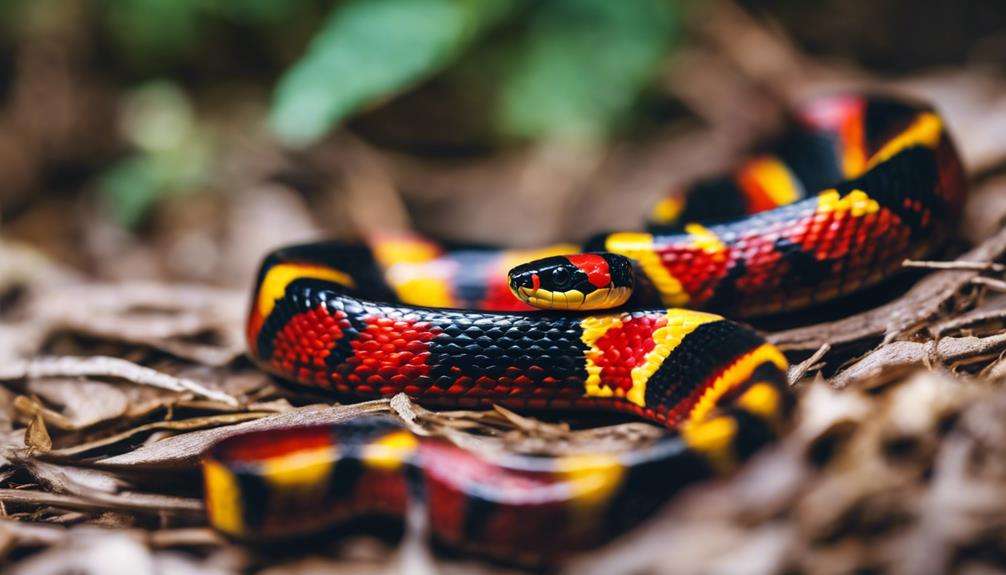
The Eastern Coral Snake, distinguished by its striking red, yellow, and black rings, is renowned for its deadly venom and vibrant coloration. Here are some key facts about this fascinating reptile:
- Venom Potency: Considered the second deadliest venomous snake after the black mamba, the Eastern Coral Snake possesses neurotoxic venom that affects the nervous system, potentially causing respiratory failure in humans.
- Diet: This snake primarily preys on small lizards, frogs, and other snakes in its natural habitat, using its venom to immobilize and digest its prey.
- Warning Coloration: The vibrant red, yellow, and black bands on the Eastern Coral Snake's body serve as a warning to potential predators of its venomous nature, a phenomenon known as aposematism.
- Range: Found mainly in the southeastern United States, the Eastern Coral Snake inhabits wooded areas, marshes, and sandy regions, where it blends into its surroundings while hunting.
These characteristics make the Eastern Coral Snake a captivating yet dangerous species in the wild. While admired for its beauty, its venomous nature underscores the importance of caution around this striking reptile.
Woma Python
With its captivating dark-ringed bands and vibrant shades of red, pink, and orange, the Woma Python found in Western Australia is a visually appealing python species known for its cute appearance. The intricate patterns on its scales contribute to its unique beauty, hence the name.
The Woma Python, also referred to as Ramsay's Python, can reach lengths of up to 9.8 feet, distinguishing it as a relatively large python species. Despite its size, this python is non-venomous, making it a popular choice among reptile enthusiasts as a pet.
Its striking coloration, adorned with a mix of red, pink, and orange hues along with dark-ringed bands, sets it apart from other snakes. The Woma Python's alluring appearance, coupled with its docile nature, further enhances its appeal as a captivating species for both experienced keepers and beginners in the world of reptile husbandry.
Bush Viper
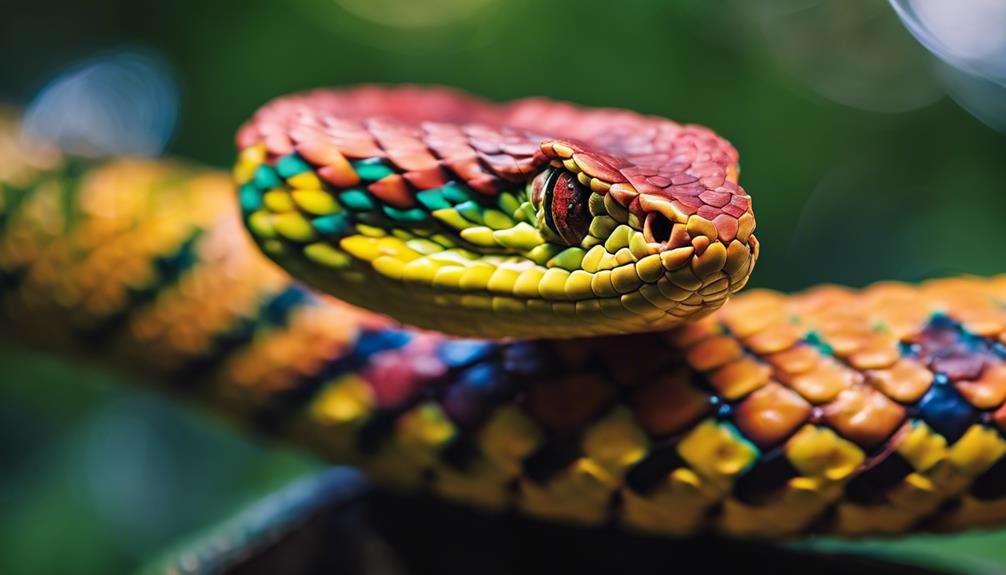
Displaying vibrant colors and striking patterns on their scales, Bush Vipers found in tropical Sub-Saharan Africa are fascinating venomous snakes known for their unique appearance. Here's some key information about these mesmerizing reptiles:
- Venomous Beauty: Bush Vipers possess a potent venom that they use to incapacitate their prey. This venom, combined with their vibrant colors, makes them stand out in the dense forests where they reside.
- Camouflage Secrets: Despite their vivid hues, Bush Vipers are masters of camouflage. Their intricate patterns help them blend seamlessly into the foliage, allowing them to ambush unsuspecting prey and evade predators effectively.
- Colorful Warnings: The bright colors and bold patterns on Bush Vipers serve as a warning sign in the animal kingdom. Potential predators quickly learn to associate these striking visuals with danger, steering clear of these venomous beauties.
Bush Vipers' deadly yet captivating presence in their natural habitat showcases the intricate balance between beauty and danger in the world of reptiles.
Boelens Python
Boelens Pythons, distinguished by their dark bluish-black or purplish-black scales, showcase a mesmerizing rainbow iridescence that sets them apart in the reptilian realm. These stunning creatures are known for their various color morphs, which range from deep blues to purples, creating a visually striking appearance. Boelens Pythons primarily inhabit the forests and swamps of New Guinea, where they can be found slithering through the lush vegetation. Their habitat preferences include areas with high humidity levels and ample hiding spots to conceal their shy nature.
In terms of reproductive behavior, Boelens Pythons are oviparous, meaning they lay eggs rather than giving birth to live young. During the breeding season, males engage in courtship rituals to attract females, where they may engage in gentle wrapping behaviors. Once the female lays her eggs, she'll diligently protect and incubate them until they hatch. Boelens Pythons are fascinating creatures that captivate with their unique colors and behaviors, making them a captivating species in the world of reptiles.
Eyelash Viper
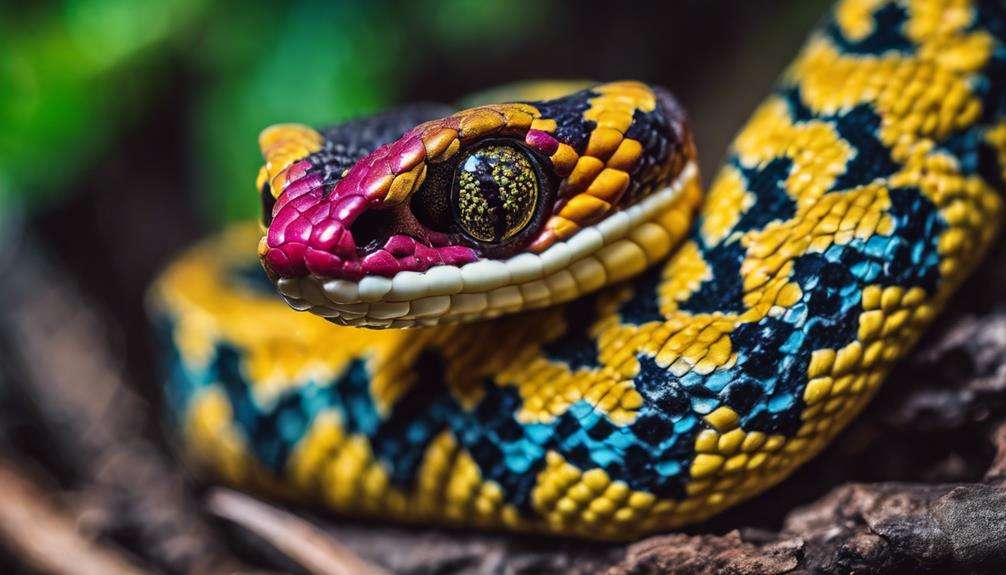
Eyelash Vipers, known for their vibrant yellow colors that aid in camouflaging among banana plants, possess distinctive modified scales above their eyes resembling eyelashes, contributing to their unique appearance in the reptilian world. These snakes utilize various camouflage strategies to blend seamlessly into their environment, enhancing their chances of both hunting and evading predators.
The vibrant coloration serves as a form of disruptive coloration, breaking up their outline and making them harder to detect by unsuspecting prey. Furthermore, their eyelash-like scales above the eyes may help in further camouflaging the snake by creating visual distractions. Despite local myths suggesting otherwise, Eyelash Vipers can't wink at their prey due to the absence of eyelids, but their striking appearance alone is enough to captivate attention.
In the wild, these vipers rely on their unique camouflage and ambush hunting strategy to capture small prey efficiently and survive in their habitat.
San Francisco Garter Snake
With its striking array of colors and unique keeled dorsal scales, the San Francisco Garter Snake captivates enthusiasts as one of the most beautiful reptiles in existence. This snake showcases a vibrant palette of black, red, blue-green, and orange hues, creating a mesmerizing sight.
Conservation efforts are crucial for this species due to habitat loss and fragmentation. Habitat restoration projects aim to provide the San Francisco Garter Snake with suitable environments for breeding and foraging. Captive breeding programs play a significant role in ensuring the survival of this species. These breeding projects help maintain genetic diversity and prevent inbreeding depression.
Researchers and herpetologists also work on identifying different color morphs within the San Francisco Garter Snake population to better understand its variability. By combining conservation efforts, habitat restoration, captive breeding, and studying color morphs, enthusiasts and scientists contribute to the preservation of this stunning snake species.
Ringneck Snakes
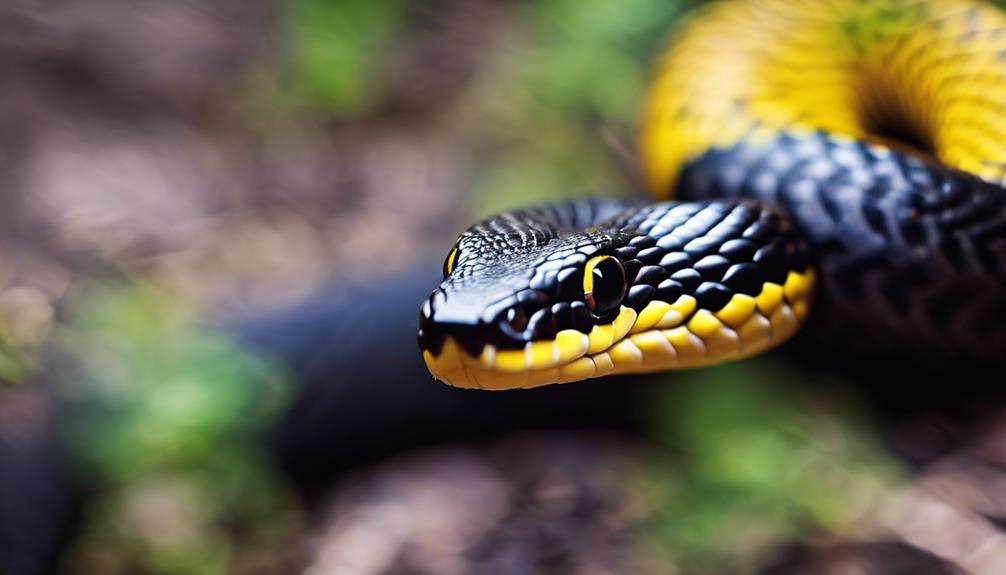
Ringneck snakes, recognized for their distinct ring-like patterns encircling their necks, are small reptiles typically measuring between 10 to 15 inches in length. When it comes to their habitat preferences, these snakes are commonly found in moist environments such as forests, grasslands, and wetlands where they can easily find their preferred prey.
Here are some key points about Ringneck snakes:
- Habitat Preferences: Ringneck snakes prefer moist environments like forests, grasslands, and wetlands due to the abundance of their prey and suitable hiding spots.
- Reproductive Behavior: Mating in Ringneck snakes usually occurs in the spring, with females laying a small clutch of eggs in hidden locations like rotting logs or under rocks.
- Predation Avoidance Strategies: To avoid predators, Ringneck snakes employ a defensive tactic of curling their tail and exposing their bright underside, mimicking the appearance of venomous species to deter threats.
- Activity Patterns: These snakes are primarily nocturnal, actively foraging for small insects, worms, and slugs under the cover of darkness.
Piebald Ball Pythons
Piebald Ball Pythons exhibit a fascinating genetic mutation resulting in distinctive white patches on their skin, making them visually striking.
These unique coloration patterns have captivated reptile enthusiasts due to their eye-catching appearance.
Breeders often work to enhance and refine these patterns through selective breeding techniques.
Piebald Ball Python Genetics
The distinctive white patches seen on Piebald Ball Pythons result from a genetic mutation causing a lack of melanin production in those areas. When delving into Piebald Ball Python genetics, several crucial points come to light:
- Genetic Inheritance: The piebald trait is inherited in a recessive manner, requiring both parents to carry the gene for offspring to display the striking piebald pattern.
- Melanin Production: The lack of melanin in specific areas leads to the stark contrast between the white patches and the pigmented skin on Piebald Ball Pythons.
- Color Variation: This genetic variation results in a visually appealing coloration that sets Piebald Ball Pythons apart from other reptiles.
- Market Demand: Due to their unique appearance, Piebald Ball Pythons are highly sought after in the reptile enthusiast community, driving up their market demand.
Unique Coloration Patterns
Characterized by their distinct white blotches and striking contrast with the base color, the coloration patterns of Piebald Ball Pythons showcase a genetic marvel in the reptilian world. These color morphs exhibit a range of pattern variations, with each snake displaying unique white patches that can vary in size and shape.
The aesthetic appeal of Piebald Ball Pythons lies in their individualized patterns, making each snake a work of art in its own right. Found predominantly in West and Central Africa, these pythons are highly sought after by reptile enthusiasts for their visually striking appearance.
The name 'piebald' originates from the genetic condition responsible for the irregular white patches on their skin, adding to the allure of these captivating reptiles.
Breeding for Patterns
Breeding enthusiasts keen on developing specific patterns in Ball Pythons focus on the genetic intricacies that produce the sought-after piebald design. When breeding for piebald patterns in Ball Pythons, here are some key aspects to consider:
- Color Morphs: Piebald Ball Pythons exhibit a unique coloration pattern with white patches on a dark background, creating a visually striking appearance.
- Breeding Techniques: Breeders selectively pair Piebald Ball Pythons to enhance and propagate the piebald pattern in successive generations, utilizing controlled breeding programs.
- Genetic Inheritance: The piebald pattern is a result of a mutation affecting pigmentation, which follows specific genetic inheritance patterns in breeding.
- Aesthetic Appeal: The piebald pattern is highly coveted by reptile enthusiasts and collectors for its distinct and appealing aesthetic qualities.
Frequently Asked Questions
What Is the Most Vicious Reptile?
You're asking about the most vicious reptile. The Inland Taipan takes that title. It's the most venomous, with potent neurotoxins. Despite its aggression, it's elusive, avoiding humans. Its defensive mechanisms make it deadly.
What Snake Has a Pattern?
When it comes to snake patterns, pythons showcase intricate bands, rattlesnakes display distinct markings, and cobras exhibit unique designs. These reptiles' skin patterns serve various purposes, from camouflage to warning signals, reflecting their diverse habitats.
What Reptile Has Spikes?
When you think of reptiles with spikes, the Thorny Devil lizard immediately comes to mind. Its impressive spike patterns not only serve as a defense mechanism but also help regulate body temperature with color variations.
Why Do Reptiles Have Patterns?
Reptiles have patterns for an evolutionary advantage, enhancing camouflage effectiveness for predator avoidance. These intricate designs help them blend seamlessly into their environment, offering a crucial survival strategy in the wild.
Conclusion
You have now explored a fascinating array of reptiles with striking patterns, from the vibrant hues of the Blue Malayan Coral Snake to the intricate markings of the Eastern Coral Snake.
Each species showcases its own unique coloration, drawing you into the mesmerizing world of reptilian beauty.
As you observe these captivating creatures, you're immersed in a kaleidoscope of colors and patterns that highlight the intricate wonders of nature.
